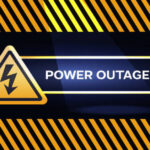The ANAG test is a specialized diagnostic and evaluative tool used to assess analytical reasoning, abstract logic, and generalized cognitive capability in a variety of professional, academic, and clinical settings. Though not as widely recognized as standardized tests like the SAT or IQ exams, the ANAG test holds growing importance in fields ranging from psychology to corporate recruitment and even military intelligence. For those encountering this test for the first time, understanding its structure, intention, and interpretive power is crucial—not just to perform well, but to understand what exactly is being measured.
This article offers a deep, structured, and updated look at the ANAG test—what it evaluates, how it differs from similar assessments, how it’s used, and how to prepare effectively.
What Is the ANAG Test?
The term ANAG is often an acronym, with different institutional variations, but it broadly stands for Analytical and Generalized Aptitude Grid. It is a matrix-based or logic-based testing mechanism designed to test how an individual perceives, interprets, and manipulates abstract patterns and relationships.
While some use it for high-stakes decisions—such as admissions, placement, or recruitment—others employ it in therapeutic contexts to determine cognitive strengths and weaknesses.
The ANAG test primarily evaluates:
- Pattern recognition
- Deductive reasoning
- Logical sequencing
- Abstract relationship mapping
- Problem-solving under time pressure
Key Features of the ANAG Test
| Feature | Description |
|---|---|
| Format | Multiple-choice or fill-in-the-grid pattern matrix |
| Time Limit | Typically 30 to 90 minutes |
| Question Type | Logic puzzles, pattern completion, matrix analogies |
| Scoring Style | Scaled scores based on speed and accuracy |
| Delivery Mode | Online and paper-based options |
The Purpose Behind the Test
The central aim of the ANAG test is cognitive elasticity—the brain’s ability to shift frameworks quickly and resolve ambiguities with minimal data. Unlike memory-based exams, the ANAG test does not assess what you know. Instead, it assesses how you think, which makes it a valuable tool for:
- Screening high-level candidates in tech, consulting, or analytics
- Identifying giftedness in academic contexts
- Diagnosing potential learning disorders or asymmetries in cognitive processing
- Evaluating military or strategic reasoning skills
For employers, the test offers an unbiased method to assess mental agility; for psychologists, it’s a diagnostic probe; for test-takers, it’s a mirror held up to their pattern-processing brain.
History and Evolution of the ANAG Framework
Though the term ANAG only gained prominence in the last two decades, the philosophical roots of the test are much older. The foundational concept stems from Raven’s Progressive Matrices, a mid-20th century nonverbal test used to evaluate abstract reasoning. However, the ANAG test pushes this further by introducing complexity through layered patterns, variable rules, and real-time logical adaptations.
Evolution Highlights:
| Period | Development |
|---|---|
| 1950s-60s | Emergence of matrix reasoning in psychological testing |
| 1980s | AI-inspired logical puzzles used in research labs |
| 2000s | ANAG term formalized in cognitive and corporate testing |
| 2010s–present | Integration into software-based hiring platforms and adaptive testing systems |
Core Areas Tested by ANAG
To better understand how the test functions, let’s break down its four primary cognitive domains:
1. Pattern Detection
This section includes identifying the odd-one-out, completing sequences, or determining symmetry rules in a grid of symbols. Success here depends on visual acuity and relational logic.
2. Abstract Rule Application
Here, the user is given an evolving set of rules across multiple frames. One must identify how the rule transforms with each instance. It mirrors real-world dynamic systems like coding logic or market trend analysis.
3. Grid Mapping and Deduction
This section tests the ability to fill a grid based on clues—similar to Sudoku but often more abstract. It challenges the frontal lobe’s capacity for simultaneous processing.
4. Analogical Reasoning
Users must complete analogies using nonverbal patterns. For example, “A is to B as C is to __?” in a visual format. This mirrors the kind of relational logic used in cross-domain thinking.
ANAG Test Structure: Section Breakdown
| Section | Time Allotted | Number of Questions | Focus |
|---|---|---|---|
| Pattern Recognition | 20 minutes | 10–15 | Spatial patterns, visual inference |
| Logical Transforms | 25 minutes | 10–12 | Abstract rule application |
| Cognitive Grid Deduction | 30 minutes | 8–10 | Deductive logic, matrix completion |
| Analogical Reasoning | 15 minutes | 8–10 | Relationship identification |
Total test duration: Approximately 90 minutes, though some formats are adaptive and shorter.
How the ANAG Test Is Scored
ANAG scoring is multi-metric, incorporating speed, accuracy, and sometimes adaptive difficulty. Unlike standard exams with a binary right/wrong model, some ANAG scoring engines assign partial credit for nearly correct sequences or logical assumptions that show sound reasoning.
Scoring Levels:
| Score Range | Interpretation |
|---|---|
| 90–100 | Exceptional cognitive agility |
| 75–89 | Above average; strong logical aptitude |
| 50–74 | Average; typical for general population |
| 30–49 | Below average; may indicate processing lags |
| <30 | Suggests possible learning challenge or unfamiliarity with abstract reasoning tasks |
These ranges may vary by institution or context.
Who Uses the ANAG Test?
The ANAG test finds applications in multiple domains:
- Corporate Settings: Used by high-growth companies for hiring data analysts, engineers, and strategists.
- Academic Institutions: Integrated into gifted-and-talented programs or cognitive screening for university entrance.
- Military Organizations: Applied in officer training selection or cybersecurity roles.
- Psychology Clinics: Helps in assessing cognitive flexibility, especially post-trauma or developmental assessment.
Preparation Strategies for the ANAG Test
While the test doesn’t rely on rote memorization, it can be trained for. Here’s how:
1. Practice Pattern Recognition
Use apps or books that train visual logic (e.g., matrix puzzles, symbol sequences).
2. Timed Logical Puzzles
Train under time constraints. Set a timer for 5–10 minutes and solve a series of logic puzzles or analogies.
3. Understand Abstract Rule Systems
Study how rule-based systems evolve, such as mathematical sequences or if/then logic from coding.
4. Use Adaptive Testing Tools
Some digital platforms simulate adaptive difficulty. Practicing on these helps mimic the ANAG experience.
5. Mind-Mapping Techniques
Use visual mind maps to train your brain in cross-relational thinking. The goal is to visually link concepts under time pressure.
Common Mistakes to Avoid
- Overthinking simple questions: Some items are deliberately easy to create a false sense of security.
- Ignoring time: Many fail not due to logic flaws but poor time allocation.
- Assuming rules are static: Some sections shift rules mid-pattern. Flexibility is key.
- Skipping instructions: ANAG questions often hinge on subtle instruction details.
Sample ANAG Question (Illustrative Only)
Matrix Completion:
A 3×3 grid has the following symbols in each box:
Row 1: ▲, ▼, ▲
Row 2: ●, ■, ?
Row 3: ▲, ▼, ▲Which symbol replaces the question mark?
Answer Logic:
Row 2 must mirror the visual logic of the others. Since Row 1 and 3 are identical, the central row may be following a horizontal inversion. Thus, the missing symbol is ●.
ANAG vs. Other Cognitive Tests
| Test Name | Focus | Unique Traits |
|---|---|---|
| IQ Tests | General intelligence | Verbal and numerical components included |
| Raven’s Matrices | Abstract reasoning | Simpler pattern structure |
| GRE/GMAT Logic | Academic aptitude | Heavily verbal or numerical |
| ANAG | Multi-modal reasoning | Dynamic rule adaptation and abstract pattern layers |
Real-World Relevance
The logic skills tested by ANAG mirror real-world applications in:
- Coding and algorithm design
- Strategic thinking in leadership
- Systems theory and modeling
- Crisis response and real-time problem solving
Increasingly, the workplace prizes cognitive flexibility over memorization, making ANAG-type assessments more relevant in hiring and training.
Psychological Insight from ANAG
From a neuroscientific perspective, ANAG tests activate the dorsolateral prefrontal cortex, associated with executive functioning, and the parietal lobe, responsible for visual-spatial reasoning. By measuring response time and adaptation, psychologists can glean insights about cognitive tempo, working memory, and lateral thinking.
This makes the ANAG test useful in post-trauma cognitive rehabilitation, ADHD assessment, and executive functioning evaluations.
Final Reflections
The ANAG test is not merely a measure of intelligence—it’s a reflection of how we adapt, perceive patterns, and make decisions in real time. In an age that values agility over rigidity, the skills it measures are not just academically or professionally useful—they are life skills.
Understanding its structure, practicing its logic, and approaching it with a flexible mindset can yield significant advantages in modern educational, professional, and cognitive contexts. And perhaps more importantly, it allows individuals to better understand how they think—not just what they know.
If you’re preparing for the ANAG or just intrigued by how logic and design intersect with psychology, mastering this test offers a window into the architecture of your own mind.
FAQs
1. What exactly does the ANAG test measure?
The ANAG test evaluates cognitive skills like abstract reasoning, pattern recognition, logical deduction, and problem-solving speed. It focuses on how well a person can identify, interpret, and manipulate nonverbal information under time constraints, rather than measuring factual knowledge.
2. Who typically takes the ANAG test?
The ANAG test is used across industries and institutions—including corporate hiring for analytical roles, academic programs for gifted students, military evaluations, and psychological assessments for cognitive flexibility or executive functioning.
3. How is the ANAG test different from an IQ test?
Unlike traditional IQ tests that often include verbal and mathematical reasoning, the ANAG test focuses specifically on nonverbal abstract reasoning. It emphasizes dynamic pattern-solving and logical structure over language or memory-based questions.
4. Can I prepare for the ANAG test?
Yes. While the test measures innate reasoning skills, practice with logic puzzles, matrix reasoning, and time-based problem sets can improve familiarity and performance. Focus on flexibility, speed, and accuracy under pressure.
5. Is the ANAG test timed, and how is it scored?
Yes, the ANAG test is usually timed, with sections lasting between 15 and 30 minutes each. Scoring is based on a combination of accuracy, speed, and in some versions, the difficulty level of questions completed, producing a scaled or percentile score.











